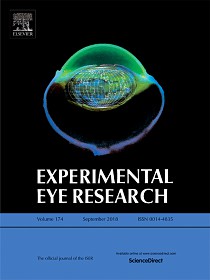All AbMole products are for research use only, cannot be used for human consumption.

PD98059 is an equipotent antagonist of the aryl hydrocarbon receptor and inhibitor of mitogen-activated protein kinase kinase. MEK/ERK pathways are frequently activated in acute myelogenous leukemia, and this signal pathway's inhibitor has made it an interesting candidate for cancer chemotherapy. PD98059 inhibits cell growth and proliferation in acute myelogenous leukemia (AML) cell lines; causes G1 arrest by blocking p53-dependent p21 induction. PD98059 significantly arrests the G1 phase through up-regulation of cyclin-dependent kinase (Cdk) inhibitor, and produces morphological features of apoptosis in U937 cells, which were associated with poly(ADP-ribose)polymerase (PARP) cleavage and PLC-gamma1 degradation. PD98059 also decreased the Cdk-2, Cdk-4, cyclin D1, and cyclin E expression, and increased high levels of the mitotic inhibitors p16(INIa), p21(Waf1), and p27(Kip1). Also, Bcl-2's overexpression and a caspase-3 inhibitor z-DEVD-fmk significantly attenuated PD98059-induced apoptosis through the down-regulation of caspase-3 activity, but did not attenuate G1 phase arrest. Moreover, PD98059 down-regulated Akt phosphorylation and produced a synergy effect of apoptosis with LY294002 co-treatment. Other studies have shown that the expression of KAT2B protein in cells is significantly decreased after PD98059 inhibits ERK signaling pathway, suggesting that 17β-E 2 can increase KAT2B protein expression by activating ERK signaling pathway, thus enhancing ER activity and enhancing positive feedback of estrogen effect.

Environ Pollut. 2025 Mar 03; .
Long-term and low-dose exposure to triclosan induces POI phenotype in female offspring mice
PD98059 purchased from AbMole

Int Immunopharmacol. 2025 May 16;155:114615.
Antiproliferative and apoptotic effects of (1R*, 12R*)-dolabella-4 (16), 7, 10-triene-3, 13-dione (CI-A) in oral cancer cells are mediated by oxidative stress and ERK activation
PD98059 purchased from AbMole

Cell Death Dis. 2024 Aug 01;15(8):555.
PD-L1 induces autophagy and primary resistance to EGFR–TKIs in EGFR-mutant lung adenocarcinoma via the MAPK signaling pathway
PD98059 purchased from AbMole

Neurourol Urodyn. 2024 Aug 16.
The SDF-1/CXCR4 axis is involved in adipose-derived stem cell migration
PD98059 purchased from AbMole

J Nanobiotechnology. 2022 Feb 2;20(1):65.
Dental pulp stem cell-derived exosomes suppress M1 macrophage polarization through the ROS-MAPK-NFκB P65 signaling pathway after spinal cord injury
PD98059 purchased from AbMole

World J Gastroenterol. 2020 Jun 7;26(21):2810-2820.
Gan Shen Fu Fang ameliorates liver fibrosis in vitro and in vivo by inhibiting the inflammatory response and extracellular signal-regulated kinase phosphorylation
PD98059 purchased from AbMole

Exp Cell Res. 2020 Jan 1;386(1):111719.
Tim-3 suppresses the killing effect of Vγ9Vδ2 T cells on colon cancer cells by reducing perforin and granzyme B expression.
PD98059 purchased from AbMole

Environ Toxicol. 2020 Jun;35(6):673-682.
Pomegranate Extract Inhibits Migration and Invasion of Oral Cancer Cells by Downregulating Matrix metalloproteinase-2/9 and Epithelial-Mesenchymal Transition
PD98059 purchased from AbMole

Exp Eye Res. 2018 Nov;176:10-19.
Rapamycin mediates mTOR signaling in reactive astrocytes and reduces retinal ganglion cell loss.
PD98059 purchased from AbMole
| Cell Experiment | |
|---|---|
| Cell lines | C-33 and C-81 cells |
| Preparation method | Treatment with chemotherapeutic agents. Cells were seeded in 6-well culture plates in regular culture medium at a density of 2.5*105 and 1*105 cells/well for C-33 and C-81 cells, respectively, for 2 days and then fed with SR medium, i.e., PR-free RPMI-1640 medium containing 5% heat-inactivated CS-FBS, 1% glutamine and 0.5% gentamicin. Two days after steroid starvation, one set of attached cells was harvested and counted as day 0. The remaining cells were fed with fresh SR medium and treated with PD98059, U0126, vinorelbine, docetaxel or various combinations in which the dosage of each reagent was specified. Control cells were maintained in SR medium and received solvent alone without chemotherapeutic agents. Fresh SR medium with or without chemotherapeutic agents was added every 3 days. Treatment was continued for 3 or 6 days, as described in each figure legend. To quantify the inhibition of cell growth, attached cells were trypsinized and the cells counted with a Coulter counter. The number of cells in control sets that received solvent alone was designated as 100% for comparison. All experiments were done in triplicate and repeated at least twice. |
| Concentrations | 0~10 μM |
| Incubation time | 3 or 6 days |
| Animal Experiment | |
|---|---|
| Animal models | acute lung injury in mice |
| Formulation | DMSO, then diluted with saline |
| Dosages | 10mg/kg |
| Administration | i. p. |
| Molecular Weight | 267.28 |
| Formula | C16H13NO3 |
| CAS Number | 167869-21-8 |
| Solubility (25°C) | DMSO 15 mg/mL |
| Storage | -20°C, dry, sealed, protect from light |
| Related MEK Products |
|---|
| Balamapimod
Balamapimod (MKI 833) is a reversible Ras/Raf/MEK inhibitor with potential anti-tumor activity. |
| PD-334581
PD-334581 is a MEK1 inhibitor. |
| Tunlametinib
Tunlametinib, an antineoplastic agent, is a MEK1/2 inhibitor. |
| Glycinexylidide
Glycinexylidide (GX) is the active metabolite of Lidocaine. |
| Xantocillin
Xantocillin (Xanthocillin X) is a marine agent extracted from Penicillium commune, induces autophagy through inhibition of the MEK/ERK pathway. |
All AbMole products are for research use only, cannot be used for human consumption or veterinary use. We do not provide products or services to individuals. Please comply with the intended use and do not use AbMole products for any other purpose.


Products are for research use only. Not for human use. We do not sell to patients.
© Copyright 2010-2024 AbMole BioScience. All Rights Reserved.
